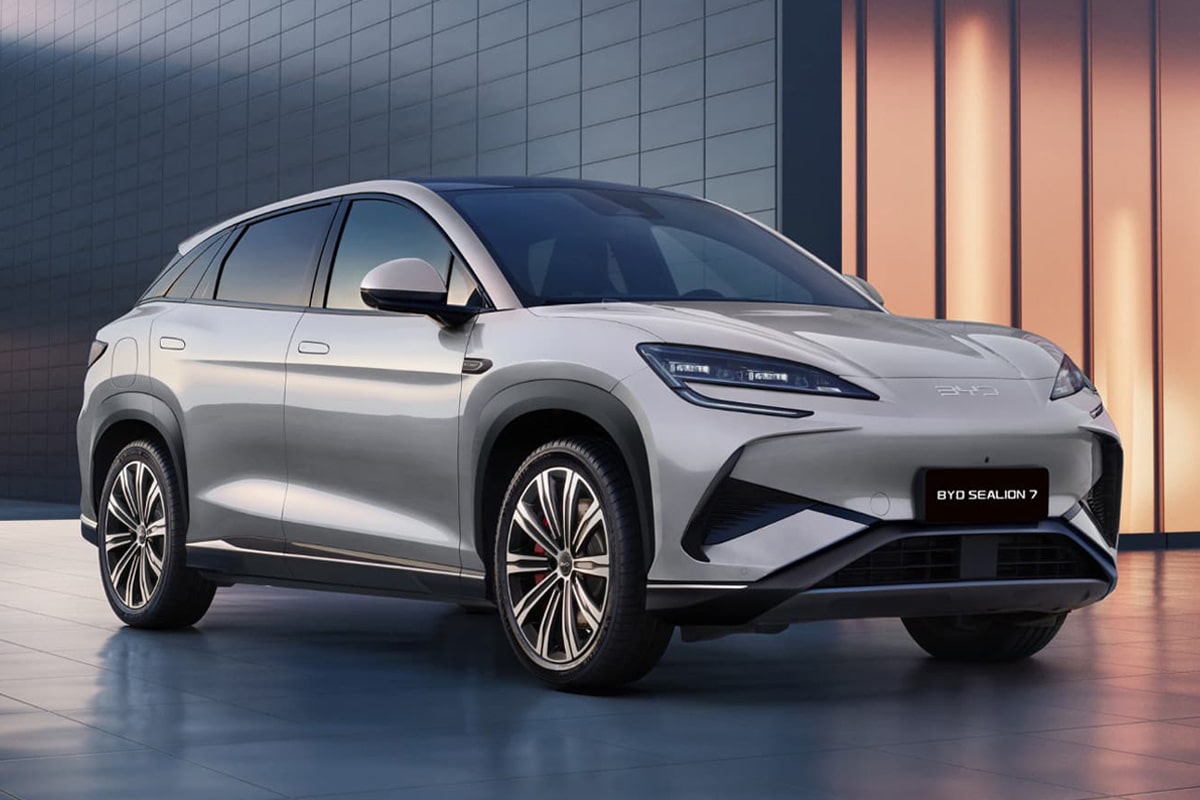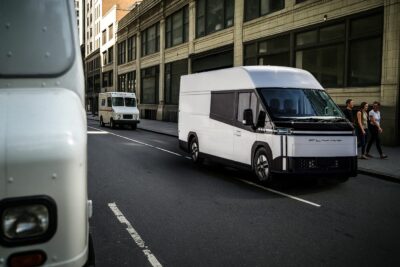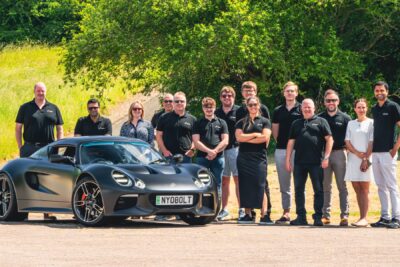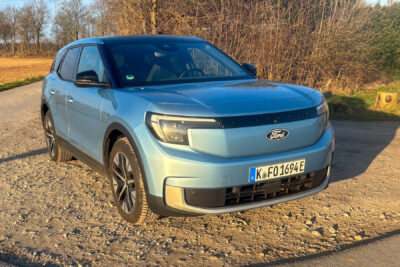Nuevo récord de ventas de NEV en China
En el mes récord anterior, se vendieron en China 1,191 millones de vehículos de nueva energía (VNE) a finales de 2023, principalmente vehículos eléctricos de batería (BEV) e híbridos enchufables (PHEV). En la actualidad, los vehículos de pila de combustible sólo desempeñan un papel menor en China, especialmente en el sector de los turismos. Sin embargo, tras un débil comienzo en 2024, ya se ha batido el récord histórico incluso antes del habitual repunte de fin de año, con 1,287 millones de NEV en septiembre.
Para ilustrar el crecimiento en China, también ayuda echar un vistazo a Septiembre de 2023: Porque entonces también fue un mes récord, con 904.000 NEV superando por primera vez la marca de los 900.000. En comparación, el resultado de septiembre de 2024 representa un aumento de más del 42%. Los aproximadamente 1,1 millones de unidades de Agosto de 2024 también se superaron significativamente en septiembre.
Los 1.287.000 vehículos de nueva energía se repartieron entre 775.00 BEV y 511.000 PHEV en septiembre, según cifras de la Asociación China de Fabricantes de Automóviles (CAAM). Esto significa que la proporción ha vuelto a inclinarse a favor de los vehículos eléctricos de batería - las ventas de BEV fueron de sigue bajando en julio (hasta 551.000 unidades) antes de alcanzar su nivel más alto del año hasta la fecha de 646.000 vehículos en agosto. 775.000 BEV en septiembre representan, por tanto, un nuevo máximo anual para los vehículos eléctricos de batería.
Sin embargo, la demanda no sólo ha aumentado para los BEV: Los híbridos enchufables también batieron un nuevo récord, tras haberlo logrado ya en julio (438.000) y agosto (453.000). En comparación con el mismo mes del año pasado, se produjo incluso un aumento del 84,5%: en septiembre se vendieron 277.000 PHEV. Por tanto, los híbridos enchufables desempeñan un papel cada vez más importante en el mercado chino y para los fabricantes chinos.
Entre todos los tipos de propulsión, se vendieron 2.809.000 vehículos en China, lo que supone un descenso del 1,7% respecto al mismo periodo del año anterior, pero un aumento del 14,5% respecto a agosto. Esto significa que la proporción de VNE en septiembre fue del 45,85%, frente al 44,8% de agosto. Para ilustrar el desarrollo global del mercado: A principios de 2020, China todavía tenía una proporción de NEV inferior al 5%.
Con estas cifras, el CAAM registra las ventas al por mayor de los fabricantes de automóviles, incluidas las ventas en China y las exportaciones a los mercados de ultramar. Sin embargo, la gran mayoría se queda en China: se exportaron 111.000 vehículos de nueva energía (+0,9% respecto a agosto). De ellos, 89.000 unidades estaban equipadas con sistemas de propulsión eléctricos de batería, el resto eran híbridos enchufables.
El crecimiento del mercado chino también puede explicarse claramente con el ejemplo de BYD. El fabricante sólo fue capaz de vender más de 50.000 vehículos de nueva energía en un mes por primera vez a mediados de 2021, pero la marca de los 100.000 se superó a principios de 2022. En septiembre de 2024 se estableció otro nuevo récord, ya que BYD vendió 419.426 NEV, el cuarto mes récord consecutivo. En BYD, el crecimiento se debe a los híbridos enchufables, que ahora tienen una gran demanda. Con 164.956 unidades, los BEV "sólo" aumentaron un 9,1% respecto al año anterior, mientras que los PHEV crecieron un 86,2% hasta las 252.647 unidades. En otras palabras, casi la mitad de todos los híbridos enchufables en septiembre procedían de BYD.
Tesla también estableció un nuevo récord en septiembre: el fabricante estadounidense vendió 72.200 coches eléctricos en China, superando el anterior máximo anual de agosto (63.450 vehículos). Las cifras al por mayor de la CAAM para Tesla muestran incluso 88.321 vehículos, de los que 16.121 unidades se exportaron.
Leapmotor vendió más de 30.000 vehículos en septiembre por segundo mes consecutivo. Tras un gran aumento de las ventas en agosto, septiembre registró un incremento hasta los 33.767 vehículos. En comparación con septiembre de 2023, esto corresponde a un aumento del 114%.
Xpeng y Nio lanzan nuevas marcas subsidiarias
Xpeng vendió 21.352 unidades (+39%) en septiembre, lo que supone también un nuevo récord mensual. La empresa había obtenido unos resultados bastante peores en los meses anteriores. Hay una razón sencilla para el buen resultado de septiembre: Xpeng pudo entregar más de 10.000 Mona M03, la berlina eléctrica desarrollada conjuntamente con Didi, sólo en el primer mes. Así pues, los modelos conocidos de Xpeng se mantienen más o menos en el nivel anterior; el nuevo modelo, en cambio, tiene una gran demanda. Los próximos meses mostrarán cuánto durará este auge.
De este modo, Xpeng se situó justo por delante de Nio, que registró 21.181 vehículos en septiembre. De ellos, 20.349 vehículos eran atribuibles a la marca Nio y los primeros 832 a Onvo, donde la empresa inició sus primeras entregas a finales de septiembre. Queda por ver, por tanto, cómo evolucionarán las ventas con Onvo en los próximos meses. Zeekr se sitúa entre Xpeng y Nio, con la marca de Geely totalizando 21.333 unidades.
La situación es algo diferente en Xiaomi. Hasta ahora, la división de e-cars de la empresa de telefonía móvil solo ha publicado las cifras exactas de ventas de abril y mayo; desde junio, solo ha afirmado que se han vendido "más de 10.000 unidades" del SU7. Sin embargo, un gráfico de barras publicado muestra un crecimiento continuo, a pesar de que no se han publicado cifras desde junio. No obstante, Xiaomi afirma que la fábrica quiere alcanzar un objetivo de producción de 20.000 unidades en octubre.
Basándose en el gráfico de barras, sólo se puede estimar que Xiaomi está por delante de Neta Auto. Esto se debe a que la cifra exacta de ventas de Neta es de 10.118 vehículos. Esto significa que actualmente las cifras de Neta están descendiendo ligeramente: en agosto todavía había 11.005 vehículos, en septiembre de 2023 había incluso 13.211 NEV, lo que corresponde a un descenso del 23,4% a lo largo del año.
Sin embargo, esto es suficiente para mantenerse justo por delante de Voyah. La marca premium NEV de Dongfeng vendió 10.001 vehículos en septiembre. En total, Dongfeng Motor Passenger Vehicle Company registró unas ventas de 25.544 vehículos en septiembre. Además de Voyah, el fabricante también posee marcas como Nammi y Forthing - aunque no se conocen cifras exactas.
cnevpost.com (CAAM), cnevpost.com (BYD), cnevpost.com (Tesla), cnevpost.com (Leapmotor), xpeng.com (Xpeng), nio.com (Nio), zgh.com (Geely/Zeekr), cnevpost.com (Xiaomi), gasgoo.com (Neta), gasgoo.com (Dongfeng/Voyah)





0 Comentarios